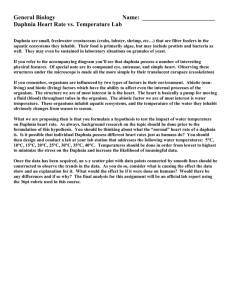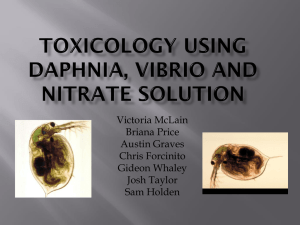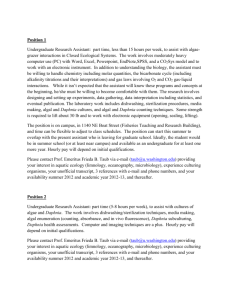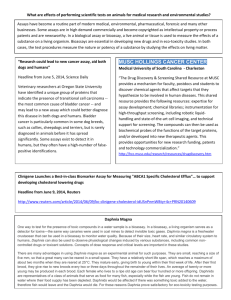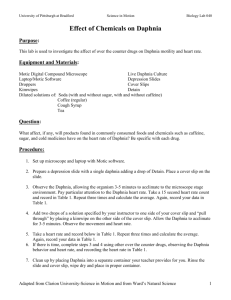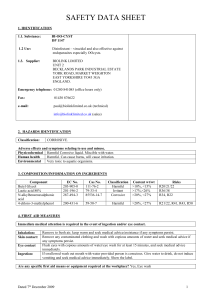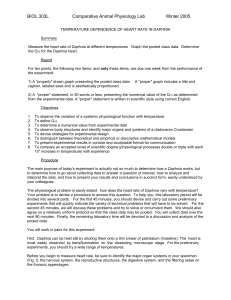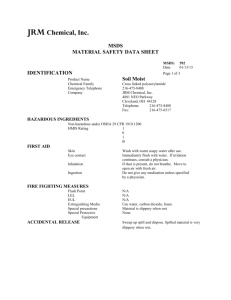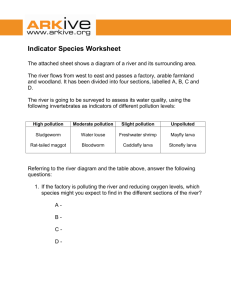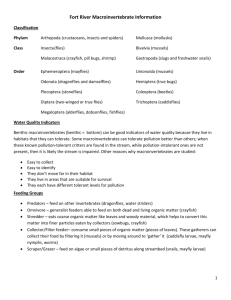C-11 Accumulation of Toxins In A Food Web
advertisement
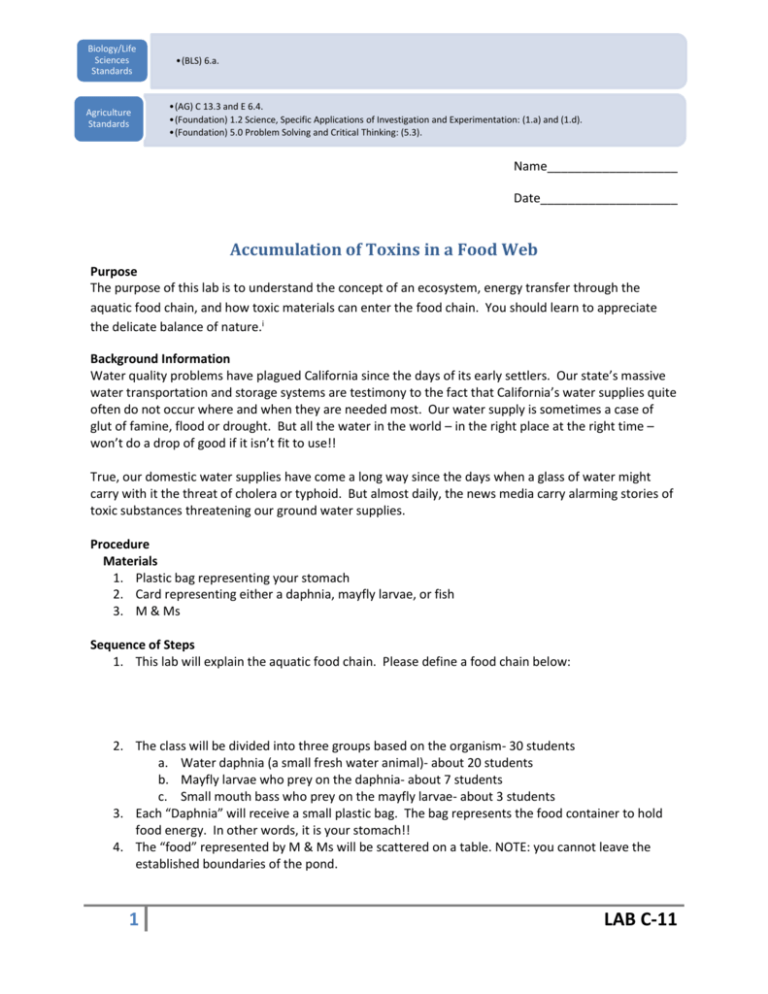
Biology/Life Sciences Standards Agriculture Standards •(BLS) 6.a. •(AG) C 13.3 and E 6.4. •(Foundation) 1.2 Science, Specific Applications of Investigation and Experimentation: (1.a) and (1.d). •(Foundation) 5.0 Problem Solving and Critical Thinking: (5.3). Name___________________ Date____________________ Accumulation of Toxins in a Food Web Purpose The purpose of this lab is to understand the concept of an ecosystem, energy transfer through the aquatic food chain, and how toxic materials can enter the food chain. You should learn to appreciate the delicate balance of nature.i Background Information Water quality problems have plagued California since the days of its early settlers. Our state’s massive water transportation and storage systems are testimony to the fact that California’s water supplies quite often do not occur where and when they are needed most. Our water supply is sometimes a case of glut of famine, flood or drought. But all the water in the world – in the right place at the right time – won’t do a drop of good if it isn’t fit to use!! True, our domestic water supplies have come a long way since the days when a glass of water might carry with it the threat of cholera or typhoid. But almost daily, the news media carry alarming stories of toxic substances threatening our ground water supplies. Procedure Materials 1. Plastic bag representing your stomach 2. Card representing either a daphnia, mayfly larvae, or fish 3. M & Ms Sequence of Steps 1. This lab will explain the aquatic food chain. Please define a food chain below: 2. The class will be divided into three groups based on the organism- 30 students a. Water daphnia (a small fresh water animal)- about 20 students b. Mayfly larvae who prey on the daphnia- about 7 students c. Small mouth bass who prey on the mayfly larvae- about 3 students 3. Each “Daphnia” will receive a small plastic bag. The bag represents the food container to hold food energy. In other words, it is your stomach!! 4. The “food” represented by M & Ms will be scattered on a table. NOTE: you cannot leave the established boundaries of the pond. 1 LAB C-11 5. The “Daphnia” will be instructed to go looking for food, gathering the “food” and placing it in their stomach. You eat by picking up one M & M at a time. You will have 30 seconds for your feeding. 6. “Mayfly larvae” will prey on the “Daphnia” by tagging them and “eat” (collect the “Daphnia” stomachs) as many as possible in 20 seconds. Any daphnia caught must give up its stomach to the mayfly larvae and move to the sidelines. 7. “Small mouth bass” are now permitted to prey on the mayfly larvae for 10 seconds. The same rules apply. 8. Go back to the classroom. The live animals are to empty their stomach(s) and separate the colors of M & Ms. 9. There is a toxic chemical loose in the water environment. It is poisonous, accumulates in the food chain and stays in the environment for a long time! All of the M & Ms represent the poison. Calculate the number of toxic M & Ms and the number of ‘safe’ M & Ms you ate and enter it in the data table. 10. All of the “Daphnia” that were not eaten by the mayfly larvae may now be considered dead if they have any of the toxic M & Ms in their food supply. Check your stomachs!! 11. Any mayfly larvae with a food supply that exceeds 40% of toxic M & Ms will also be considered dead. 12. Any fish with a concentration of 50% or over of toxic M & Ms may be able to survive, but its ability to ward off disease, produce offspring, and find or catch food may be limited. Your life expectancy is very unstable!! 13. Record your data and results. Data and Results SPECIES TOTAL M&Ms # OF SAFE M&Ms # OF TOXIC M&Ms % OF FOOD SUPPLY Daphnia Mayfly Larvae Bass Analysis & Conclusions 1. What is the aquatic food chain represented here? 2. Which species accumulated the most toxic M & Ms? 2 LAB C-11 3. What is biological magnification? 4. What is bioaccumulation? 5. Which level of the food chain is most affected by biological magnification? 6. Name three ways these species may be affected by biological magnification. 7. Can you name another toxin or chemical that has affected food chains with biological magnification? i Knapp, Elizabeth (2008). Accumulation of Toxins in a Food Web. Atwater High School Agriculture Department 3 LAB C-11
